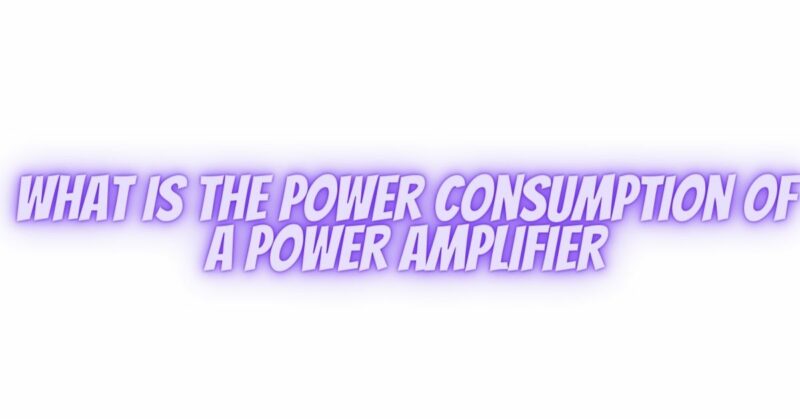Power amplifiers play a crucial role in audio systems, providing the necessary amplification to drive speakers and deliver sound to our ears. Understanding the power consumption of a power amplifier is essential for several reasons, including efficient operation, heat management, and electrical compatibility. In this article, we’ll explore what power consumption is in the context of power amplifiers and how it can be determined.
What Is Power Consumption?
Power consumption refers to the amount of electrical energy that a device consumes to perform its intended function. In the case of a power amplifier, it’s the electrical energy it draws from the power source (usually an electrical outlet) to amplify an audio signal and drive connected speakers.
Power consumption is typically measured in watts (W) and can vary significantly depending on the amplifier’s design, efficiency, and usage. It’s crucial to understand an amplifier’s power consumption to ensure it’s compatible with the available power supply and to avoid overloading circuits or causing electrical issues.
Factors Affecting Power Consumption
Several factors influence the power consumption of a power amplifier:
- Amplifier Class: The amplifier class, such as Class A, Class AB, Class D, etc., significantly impacts power consumption. Class A amplifiers, for example, are known for high power consumption due to their constant operation, while Class D amplifiers are more efficient and consume less power.
- Output Power: The amount of power an amplifier is delivering to the speakers directly affects its power consumption. Higher output power amplifiers generally consume more electricity than lower-powered ones.
- Efficiency: The efficiency of the amplifier’s internal components and design plays a significant role. More efficient amplifiers convert a larger portion of the electrical input into useful output power and generate less heat, resulting in lower power consumption.
- Volume Level: The volume at which the amplifier operates affects power consumption. Amplifiers driven at high volume levels consume more power than those operating at lower volumes.
- Signal Content: The nature of the audio signal also matters. Music with heavy bass content may demand more power from the amplifier to reproduce low-frequency sounds accurately.
- Idle vs. Operational Power: Amplifiers typically consume less power when in idle or standby mode compared to when they are actively amplifying audio signals.
Measuring Power Consumption
To measure the power consumption of a power amplifier, follow these steps:
- Check the Amplifier’s Specifications: The manufacturer’s specifications for the amplifier often include information about its power consumption. Look for a rating in watts or a current rating (in amperes) at a specific voltage.
- Use a Power Meter: You can use a power meter or wattmeter to measure the actual power consumption of the amplifier when it’s operational. Plug the amplifier into the power meter, and it will display the power consumption in watts.
- Voltage and Current Measurements: Alternatively, you can measure the voltage and current drawn by the amplifier using a multimeter. Multiply the voltage (in volts) by the current (in amperes) to calculate the power consumption in watts (P = V × I).
Conclusion
Understanding the power consumption of a power amplifier is essential for efficient operation, system compatibility, and electrical safety. Factors like amplifier class, output power, efficiency, volume level, and signal content all influence how much power an amplifier consumes during operation. By checking the manufacturer’s specifications and, if necessary, measuring power consumption directly, you can ensure that your amplifier operates optimally within your audio system while managing power usage effectively.


